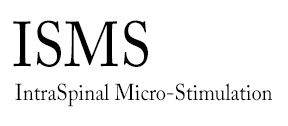
You are being asked to take part in this research study because you have a permanent spinal cord injury (SCI) that resulted in your inability to stand or walk. We wish to study whether electrical stimulation through small, hair-like wires can stimulate the muscles in the leg in paralyzed individuals like you. Today, there are no such devices that restore standing and walking in paralyzed humans. Yet, for the past 20 years, scientists have been able to use such small wires connected to a pacemaker like device to restore standing and stepping in completely paralyzed cats. These wires are placed into the spinal cord below the level of the paralysis so that the dormant circuits can be reactivated using small pulses of electricity. Based on these animal studies, and understanding the similarities of paralysis caused in cats and humans, we feel that it is likely that a similar type of device may be developed for humans. Before being able to make such a device, it is necessary to confirm that micro-stimulation of the spinal cord in humans will produce the same effects that it has in animals. This first-in-human study is necessary before designing a device that could be approved for use in paralyzed humans in the future. These micro-electrodes are commonly used for this type of mapping of other parts of the nervous system but are not FDA approved for spinal cord mapping. In fact, there are no FDA approved electrodes for the purpose of mapping the spinal cord.
To do this, we are asking two volunteers that are completely paralyzed who would normally undergo a spinal surgery in the lower thoracic region, to allow us to map the lower spinal cord with a micro electrode prototype using up to 16 micro-electrodes. We are asking 2 subjects to allow an up to an additional two hours while asleep for the surgery, to map the lower spinal cord where these circuits are believed to exist. Specifically, these micro-electrodes will be inserted into the exposed spinal cord in the region of T9-12 (vertebral level) and electrical test stimulation applied while observing for any leg movements during the surgery. This would be the first time a concept like this would be tested in humans.
| MEET THE DOCTOR | CONTACT |
|
|
Wuraola Adesinasi, APRN |
Copyright 2015 - All Rights Reserved - ISMS
.jpg)